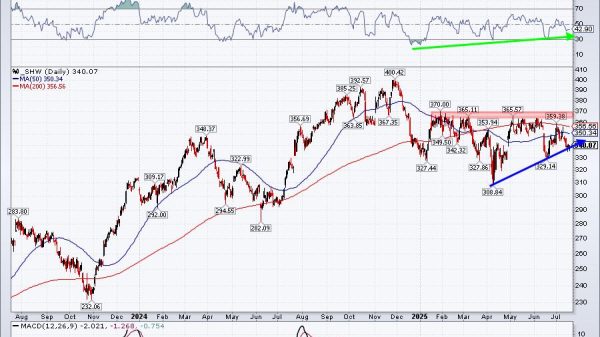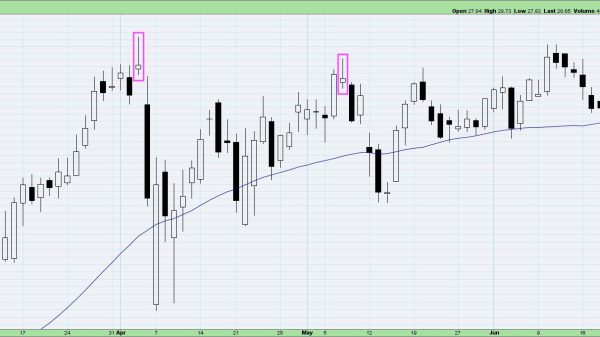Why are stocks down or up: Different Stock Analysis And News
Key Takeaways:
Understanding market analysis through fundamental and technical methods is essential for making informed trading decisions. The valuation of shares is heavily influenced by the balance of supply and demand, with global economic conditions and Federal Reserve policies playing significant roles. The performance of companies, especially in critical sectors like power generation, directly impacts valuation, influencing investor choices on which securities to purchase. Trends in the market are sensitive to macroeconomic indicators such as inflation data, with potential rate changes by the Federal Reserve significantly affecting their movements. Current challenges and opportunities within specific sectors, like the struggles in the solar industry and optimism in mining equities, highlight the varied factors affecting different parts of the market.Have you ever wondered why stocks are down? What’s the main reason for this not so pleasant scenario in the most recent times?
It’s important to understand its analysis like a pro to keep up with the stock market trends. This will assist you in navigating the volatile market effectively.
So, before we jump into the latest news in this field, let’s know what stock is truly represents, represents
Grasping Stock Evaluation
Stock evaluation helps people who invest in or trade stocks to decide when to buy or sell.
This is done by analyzing data from the past and present to gain an advantage in the market. Resent to gain an advantage in the market.
This approach assumes that market data, including share prices and interest rates, reveals a stock’s inherent worth.
Key Methods of Stock Evaluation
Investors analyze financial reports, stock price trends, and raw materials costs alongside Federal Reserve policies and market indicators.
Historical data is important. Analysts use it to compare financial performance and estimate fair stock prices by looking at similar companies.
There are two main ways to evaluate stocks: fundamental analysis and technical analysis. Each method gives different information to help make smart investment choices.
What makes stock market performance go up and down?
One of the main reasons for affecting market performance is, undoubtedly, Supply and Demand in the Stock Market.
This market operates on the simple principle of supply and demand, much like any other market. Here’s how it affects stock prices:
Global Economy Influence
The wider global economy can impact the stock market’s balance of supply and demand. Economic conditions worldwide can influence investor decisions on which stocks to buy or sell.
Supply and Demand Equilibrium
In the stock market, ‘supply’ refers to the amount of shares available for sale, and ‘demand’ is how many shares investors want to buy. Prices change based on the balance between supply and demand.
Price Changes
Demand exceeds supply if more people are looking to buy stocks than sell, particularly in growing sectors like power-generating companies, pushing prices up as buyers compete. Conversely, if sellers outnumber buyers, prices fall until they attract interest.
How Company Performance Affects Stocks
Investment Opportunities:
Investors pick stocks based on a company’s current performance and future potential. They pay special attention to industries like power generation that significantly impact the global economy.
Company’s Future Prospects:
The performance of a company, especially one in a critical industry like power generating, influences its stock price.
Positive growth forecasts can make these stocks attractive as investors anticipate higher profits.
Stock prices are hugely affected by supply and demand, the global economic outlook, and how well individual companies are doing.
So, what is the latest stock market news? Let’s grasp the most important ones, shall we?
Market Movements: Dow and S&P 500 Face Challenges
On Monday afternoon, the Dow Jones decreased as investors waited for inflation data later in the week. The Dow dropped by 60 points, a decrease of 0.2%, settling around 39,451.
In contrast, the S&P 500 saw a minor decline of 2.6 points, or less than 0.1%, landing at 5,219. Meanwhile, the Nasdaq Composite bucked the downward trend by rising 36 points, or 0.2%, to approximately 16,376.
During the same period, most parts of the S&P 500 decreased in value. However, the information technology sector saw an increase of 0.6%.
Outlook on Russell 2000 and Small-Cap Stocks
The Russell 2000, a small-cap index, is expected to continue performing worse than larger indices in a high-interest environment. Nonetheless, Sal Esposito, head of ETFs at Zacks Investment Management, notes that select small-cap stocks could excel.
The Russell 2000 has increased by 1.9% this year, lagging behind the S&P 500’s 9.4% rise, per FactSet data. The Russell 2000 may stay quiet compared to the S&P 500 until the Federal Reserve explains possible rate cuts.
Esposito believes that small-cap value stocks could provide better returns and growth potential than small-cap growth stocks.
What is happening with solar stocks?
Solar stocks have been struggling recently. Over the past year, the Invesco Solar ETF, which tracks the performance of the solar energy sector, has dropped by 48%.
One key reason for this downturn is the rising cost of financing home projects like solar panels due to persistently high interest rates.
As solar upgrades become pricier, fewer people are investing in them. This is causing problems for solar companies due to lower demand.
What is going on with mining stocks?
Shares of Freeport-McMoRan, Hudbay Minerals, and Alamos Gold increased on Tuesday after Bank of America upgraded their ratings to “buy” from “neutral” due to optimistic forecasts for copper and gold prices.
The bank emphasized robust demand for copper, constrained supply, and increasing confidence in gold, estimating its price could hit $3,000 by 2025.
Subsequent to these upgrades, these shares reached their highest levels in more than two years, while shares of Alamos Gold achieved their highest marks in a decade.
What happened on the stock market today?
The S&P 500 and Nasdaq showed mixed results.
Now, let’s get down to Market Overview as of May the 13th, 2024.
Prices went up and down on Monday as the week started with important inflation reports coming soon. Investors are paying close attention and changing their predictions for possible interest rate cuts by the Federal Reserve.
Insight into the interest rate discussion will be gained with the upcoming release of important inflation indicators, including the producer-price (PPI) and consumer price index (CPI).
Both reports have the potential to either support or alter current expectations regarding rate cuts.
GameStop shares experienced several trading suspensions on the New York Stock Exchange due to intense volatility, prompting regulatory actions by the exchange.
Natural gas stock news – what to note?
Natural gas prices fell by 0.89% to 189.4, influenced by forecasts of milder weather and an oversupply in storage. Even as U.S. utilities stored less gas than expected and production hit a 16-week low, the dynamic is mixed with LNG export flows projected to reach a 16-week high.
The Natural Gas Supply Association (NGSA) expects record demand this summer from power consumption and exports, but increased production and higher storage levels are likely to suppress prices.
The Energy Information Administration (EIA) reports a 2.7% rise in production in the U.S. lower 48 states from the previous month, with a minor decrease in the Gulf of Mexico.
In the market, natural gas faces technical selling with a significant 11.98% drop in open interest and prices trending downward.
Support and resistance levels are identified at 187 and 193.5, respectively, suggesting potential price movements.
Bottom line
Stock prices fluctuate primarily due to supply and demand dynamics, influenced by global economic conditions and individual company performance.
Factors like interest rates, economic growth, and sector-specific trends impact investor behaviour, affecting whether they buy or sell them.
Current market trends also reflect responses to inflation data and Federal Reserve policies, which can sway the overall market direction.
Overall, understanding these elements helps explain the movements in stock prices, providing insights into potential future trends.
The post Why are stocks down or up: Different Stock Analysis And News appeared first on FinanceBrokerage.
























